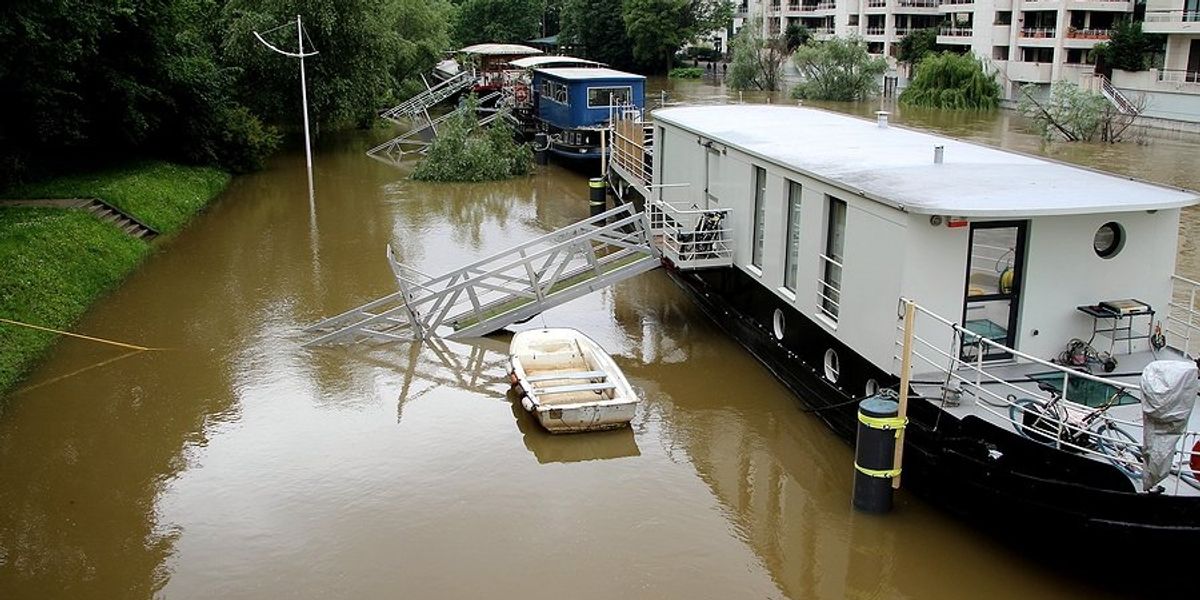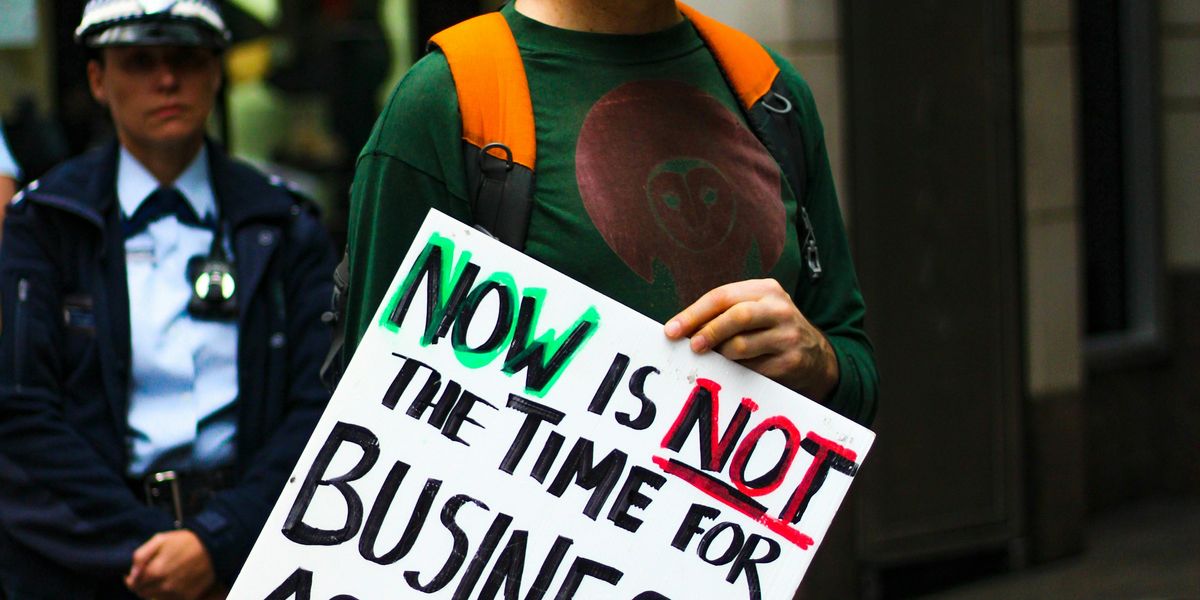air pollution
EPA faces class action lawsuit over canceled environmental justice grants
A coalition of nonprofits, tribes, and local governments is suing the U.S. Environmental Protection Agency after it abruptly canceled $3 billion in environmental justice grants awarded under the Biden administration.
In short:
- The EPA under Administrator Lee Zeldin terminated grants from the Environmental and Climate Justice program, cutting funds to 350 groups without notice, affecting projects addressing pollution, climate resilience, and public health.
- Air Alliance Houston, a small nonprofit that received a $3.1 million grant to expand air pollution permit tracking in Texas, is one of 23 plaintiffs seeking class action status to restore funding and protect similar groups.
- The lawsuit, filed with support from EarthJustice and others, argues the funding cuts were unlawful and destabilize community-led environmental efforts, particularly in low-income and heavily polluted areas.
Key quote:
“We believe that our contract was illegally terminated. There was nothing in our terms and conditions that allows an administration — Trump or otherwise — to cancel a federal contract because they don’t like what the contract is about.”
— Jennifer Hadayia, executive director of Air Alliance Houston
Why this matters:
Environmental justice grants help communities on the front lines of pollution track emissions, clean up water systems, and prepare for extreme weather. Cutting these funds guts the ability of local groups to monitor and respond to environmental risks that threaten public health. Programs like the one in Houston empower residents to know when polluting industries plan to expand operations nearby. Without that transparency, communities can be blindsided by toxic emissions or contaminated water. The rollback also raises questions about how federal agencies allocate and rescind funding, and whether political shifts can erase legally binding contracts aimed at safeguarding health and the environment.
Learn more:
California struggles to electrify trucks as Trump administration blocks state rules
California’s push to cut truck pollution and electrify freight fleets faces legal and political setbacks under President Trump, threatening public health in polluted regions like the San Joaquin Valley.
In short:
- California’s Advanced Clean Trucks and Clean Fleets rules aim to shift the state’s trucking industry to zero-emission vehicles, but under the Trump administration, the U.S. Environmental Protection Agency has revoked key waivers that would allow the state to enforce its mandates on private fleets.
- The San Joaquin Valley, where nearly half of California’s truck traffic passes through, has some of the dirtiest air in the U.S., contributing to high asthma rates and other health problems.
- Despite setbacks, state regulators and industry advocates continue building infrastructure and pushing market incentives, though some businesses are pulling back on electric truck investments amid the regulatory uncertainty.
Key quote:
“There’s no question that the transition away from combustion trucks to zero-emission would save lives, prevent asthma attacks, and generate significant, significant public health benefits all around the state.”
— Will Barrett, senior director for nationwide clean air advocacy, American Lung Association
Why this matters:
The diesel trucks that keep America’s goods moving also pour nitrogen oxides and particulate matter into the air, especially in transportation corridors like California’s San Joaquin Valley. These emissions worsen asthma and lung disease and contribute to smog and climate change. While zero-emission trucks offer a path to cleaner air, the technology faces steep economic and political hurdles. Under Trump, the federal government has moved to block California’s authority to enforce clean truck rules — a blow to efforts that protect vulnerable communities from chronic exposure to toxic exhaust. Without federal support, state-led clean air efforts are harder to enforce, and public health gains become less certain.
Read more: California backs off electric truck mandate but offers incentives
The hidden cost of powering your phone might be someone else’s cancer
As the world races to secure rare earth elements for tech and defense, residents of Baotou, China bear the brunt of toxic pollution and displacement.
In short:
- Baotou is China’s rare earth capital, fueling global tech and military industries while dealing with toxic waste and widespread health problems.
- Residents living near tailings ponds have faced cancer, birth defects, and neurological disorders linked to exposure from mining byproducts.
- While Beijing touts environmental cleanup and economic progress, local communities have been displaced, and evidence of illness and contamination persists.
Key quote:
"Large-scale extraction quite often proceeds at the expense of the health and well-being of surrounding communities, pretty much regardless of the context."
— Julie Klinger, associate professor at the University of Delaware
Why this matters:
China calls Baotou its “rare earth capital,” and it’s not exaggerating. More than 80% of the country’s known reserves are extracted and processed here. But what’s left behind after the magnets and metals are separated is an environmental nightmare — tailings ponds leaking toxics substances, and ghost towns where farms once fed generations. While Beijing talks up cleanup efforts and green growth, those living closest to the waste say the truth is much dirtier. Global tech giants and defense contractors rely on Baotou, but its people are paying with their health. The rest of the world rarely looks backRead more: In push to mine for minerals, clean energy advocates ask what going green really means
New dashboard reveals deeper heat and pollution burdens in Latino neighborhoods across California
Latino-majority communities in Los Angeles and across California face significantly higher exposure to extreme heat and air pollution than white-majority neighborhoods, according to a new data dashboard from the University of California, Los Angeles.
In short:
- The UCLA Latino Climate and Health Dashboard shows that Latino neighborhoods endure about 23 more extreme-heat days per year than white-majority neighborhoods, due to factors like less tree cover, more heat-retaining surfaces, and older housing without adequate cooling.
- Latino residents are more likely to work in heat-exposed jobs and live in areas with poor air quality and limited infrastructure, compounding risks from climate change and environmental neglect.
- Community advocates say the new tool will help push for equitable policy responses and highlight how fear of immigration enforcement deters access to care, increasing vulnerability during extreme weather.
Key quote:
“Extreme heat isn’t just uncomfortable, it’s deadly.”
— Irene Burga, director of the Climate Justice and Clean Air Program at Green Latinos
Why this matters:
Extreme heat is the deadliest weather hazard in the U.S., and its toll is not equally shared. In California, Latino communities often live in older housing with poor insulation, limited shade, and minimal air conditioning — all factors that amplify health risks as temperatures climb. These neighborhoods also tend to have higher air pollution levels and fewer public resources, putting residents at greater risk for asthma, heat stroke, and cardiovascular stress. When fear of immigration raids keeps people indoors and away from clinics or cooling centers, health threats grow. Understanding how climate and immigration pressures overlap is essential for protecting people in frontline communities who are both exposed and underserved.
Related: Poverty greatly increases risk of death during heat waves
EPA budget cuts may weaken wildfire smoke protections as air pollution worsens
The U.S. Environmental Protection Agency’s proposed budget cuts and restructuring could reduce air monitoring capacity and delay public health responses to increasingly toxic wildfire smoke across the U.S.
In short:
- The Trump administration plans to halve the EPA’s budget and eliminate thousands of positions, threatening the agency’s ability to monitor and respond to air pollution from wildfire smoke.
- Wildfire smoke contains PM 2.5 and can chemically transform into more harmful substances like ozone; in some areas, it may carry heavy metals like arsenic from contaminated soils.
- Federal monitors have played a crucial role in air quality forecasting; scientists warn that private and community sensors lack the precision to fully assess health risks without EPA infrastructure.
Key quote:
“In order to be able to better test these hypotheses, we need these federally funded monitors and networks and data. This is critical. Without that, it would be impossible to do this type of research and better understand what is going on.”
— Tarik Benmarhnia, professor of environmental epidemiology, Scripps Institution of Oceanography
Why this matters:
Wildfire smoke is becoming a primary source of air pollution across North America, and its reach extends far beyond burn zones. Fine particles in smoke, especially PM 2.5, can lodge deep in the lungs and bloodstream, aggravating asthma, heart disease, and other health conditions. With more fires ignited by climate-fueled heat and drought, even historically clean-air regions are facing hazardous smoke days. The data gathered by federal air quality monitors is essential for real-time alerts, long-term research, and regulatory action. Cutting these systems weakens national capacity to track pollution spikes, protect vulnerable communities, and prepare for a smoke-heavy future that increasingly threatens public health.
Read more: Climate-driven wildfires may be fueling the spread of respiratory disease in the U.S. West
Wildfire smoke and heat exposure before pregnancy linked to lower birth weights
Pregnant people exposed to wildfire smoke and extreme heat in the weeks before or during early pregnancy may face a higher risk of delivering smaller-than-expected babies, according to a new study.
In short:
- A study of 713 births in Los Angeles between 2016 and 2020 found that exposure to wildfire smoke and heat stress just before or early in pregnancy correlated with babies born small for their gestational age.
- The researchers used wildfire data from CalFIRE and smoke density data from the National Oceanic and Atmospheric Administration to estimate individual exposure levels, combining this with neighborhood-level climate vulnerability indexes.
- Heat exposure before pregnancy, especially in socioeconomically vulnerable areas, was also linked to higher odds of adverse birth outcomes, emphasizing the role of where someone lives and when they are exposed.
Key quote:
“Where you live makes a difference in your health. So does the timing of your exposure during or immediately before pregnancy.”
— Roxana Khalili, postdoctoral researcher at the University of Southern California
Why this matters:
The intersection of wildfire smoke, extreme heat, and pregnancy raises urgent public health concerns as climate change drives more intense fire seasons and heatwaves. Fine particle pollution from wildfire smoke can enter the bloodstream and affect fetal development, while heat stress may strain the body’s ability to regulate temperature during pregnancy. Both are more likely to impact people living in low-income neighborhoods where access to air conditioning, clean air, and prenatal care is limited. These findings point to long-term health risks for children born into communities already burdened by environmental injustice and limited infrastructure. As wildfire smoke and extreme heat become more common, understanding these risks becomes vital for shaping public health responses.
Read more: Op-ed: How climate change harms pregnant people and their babies
Wildfires in New Jersey are sparking new concerns about health effects from smoke
A spike in wildfires across New Jersey and beyond is prompting researchers to investigate the health risks posed by rising smoke exposure, as hospitals report upticks in respiratory cases and scientists warn current air quality standards may fall short.
In short:
- The Jones Road fire burned more than 15,000 acres in April, prompting evacuations, degraded air quality, and hospital visits, but New Jersey lacks the infrastructure to track health data across emergency departments in real time.
- A Rutgers study found that during the 2023 Canadian wildfire smoke event, asthma-related emergency visits in New Jersey rose by 112% in a single day, highlighting how vulnerable people are to distant fires.
- Scientists say the fine particles in wildfire smoke can bypass current pollution measures and reach the bloodstream and brain, with possible links to systemic health effects like elevated blood pressure and neurological harm.
Key quote:
“You cannot really compare apples with oranges. So we have a problem, because the PM2.5 standard is not adequate to capture these wildfire nanoparticles.”
— Philip Demokritou, professor of nanoscience and environmental bioengineering at Rutgers School of Public Health and co-author of the study
Why this matters:
As wildfires become more frequent and intense across North America, smoke is no longer just a local problem: It travels across state and national borders, exposing millions to toxic air. Unlike seasonal smog or pollen, wildfire smoke contains ultra-fine particles and chemical pollutants from burning plastics, metals, and organic matter. These particulates can pass into the bloodstream and even the brain, potentially affecting respiratory, cardiovascular, and neurological systems. Many areas like New Jersey, historically unaccustomed to large fires, are underprepared to monitor, measure, or respond to this emerging public health risk. With current pollution metrics like PM2.5 potentially underestimating the danger, experts warn we may not be seeing the full picture of wildfire smoke’s impact.
Learn more: Wildfire smoke from Canada continues to choke U.S. cities as climate patterns worsen



















